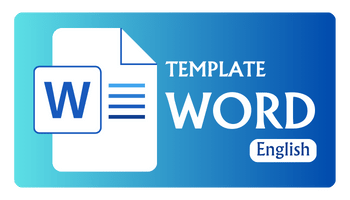Pendidikan Yang Humanis Dengan Sistem Sekolah Ramah Anak
DOI:
https://doi.org/10.55824/jpm.v1i4.131Keywords:
Humanis, sekolah ramah anak, brainstormingAbstract
Pendidikan ramah anak menjadi fokus utama dalam program merdeka belajar yang dilaksanakan oleh pemberintah. Kegiatan workshop bagi guru PAUD dan SD dilaksakan untuk menunjang propram tersebut yang dilakukan di kecamatan mantub dengan metode brainstorming. Hasil kegiatan ini memberikan pengayaan pengetahuan tentang sekolah ramah anak dan berbagi pengalamanan tentang berbagai permasalahan yang terjadi. Antusias peserta workshop sangat tinggi terhadap tema yang diberikan serta mendapatkan solusi terhadap berbagai persoalan yang terjadi dalam pelaksanaan pendidikan di sekolah mereka.Â
References
Abdullahi, H. U. (2017). Child Friendly Schools in Nigeria the Role of the Teacher. International Journal of Education and Evaluation, 7-12.
Ahmed Shafi, A., Little, R., & Case, S. (2021). Children's education in secure custodial settings: Towards a global understanding of effective policy and practice. International Journal of Educational Development, 82. https://doi.org/10.1016/j.ijedudev.2021.102379
Anglin, K. L. (2019). Gather-Narrow-Extract: A Framework for Studying Local Policy Variation Using Web-Scraping and Natural Language Processing. Journal of Research on Educational Effectiveness, 12(4), 685–706. https://doi.org/10.1080/19345747.2019.1654576
Annur, C. M. (2021, September 11). Suicide Trends in Indonesia Declined Over the Last 20 Years. Retrieved June 9, 2022, from databoks: ataboks.katadata.co.id/datapublish/2021/09/11/tren-kill-diri-di-indonesia-menurun-during-20-year-last
Arkün, S., & Akkoyunlu, B. (2008). The study of the process of developing a multimedia learning environment according to the ADDIE model and students' opinions on learning multimedia. Revistes.Ub.Edu. Retrieved from https://revistes.ub.edu/index.php/IEM/article/view/11902
Bloom, B. S., Englehard, M. D., Furst, E. J., Hill, W. H., & Krathwohl, D. R. (1956). Taxonomy of Educational Objectives: The Classification of Educational Goals: Handbook I Cognitive Domain. Longmans, Green and Co LTD, 16, 207. https://doi.org/10.1300/J104v03n01_03
Christiana, E. (2013). Education that Humanizes Humans. HUMANIORA, 398-410.
Clerkin, A. (2019). A three-wave longitudinal assessment of socioemotional development in a year-long school-based ‘gap year.’ British Journal of Educational Psychology. https://doi.org/10.1111/bjep.12267
Ekemezie, C. A., & Chinasa, C. (2015). Child Friendly Pedagogy for Sustainable Human Capacity Development in Nigerian Primary Schools. Journal of Emerging Trends in Educational Research and Policy Studies, 217–224.
Ekemezie, C. A., & Chinasa, S. (2015). Child Friendly Pedagogy for Sustainable Human Capacity Development in Nigerian Primary Schools. Journal of Emerging Trends in Educational Research and Policy Studies, 217–224.
Holisah. (2022). Implementation of the Humanist Approach in Improving Self Confident in Students' Literacy Ability. Journal of Basicedu, 1440-1448.
Ivanna Shubina, A. K. (2019). Pervasive Learning and Use of Technology for the Development of Creativity in Education | Shubina | International Journal of Emerging Technologies in Learning (iJET). Retrieved May 29, 2020, from https://online-journals.org/index.php/i-jet/article/view/9067
Na'imah, T., Widyasari, Y., & Herdian. (2020). Implementation of Child Friendly Schools to Build Character Values for Early Childhood. Journal of Obsession: Journal of Early Childhood Education, 747-756.
Ninies Eryadini. (2021). The diversity of students' emotional intelligence and its influence on student activities in the learning process | Journal of diversity in learning (JDIL). Retrieved March 16, 2022, from https://journalofdiversity.com/index.php/jdil/article/view/32
Nurdiana, R. (2021). The influence of differences in learning habits and management of children's mentoring time on the performance of the children's character. In JDIL Journal of Diversity in Learning (Vol. 1). Retrieved from https://journalofdiversity.com/index.php/jdil/article/view/17
Odden, T. O. B., & Russ, R. S. (2019). Defining sensemaking: Bringing clarity to a fragmented theoretical construct. Science Education, 103(1), 187–205. https://doi.org/10.1002/sce.21452
Rosalin, E. (2008). Teachers in improving students' thinking power. Journal of Educational Management, 8(2).
Sastrawan, K. B., & Primayana, K. H. (2020). The Urgency of Humanism Education in the Frame of A Whole Person. Haridracarya: Journal of Hindu Religious Education, 1-12.
Sewasew, D., & Koester, L. S. (2019). The developmental dynamics of students' reading self-concept and reading competence: Examining reciprocal relations and ethnic-background patterns. Learning and Individual Differences, 73, 102–111. https://doi.org/10.1016/j.lindif.2019.05.010
Suryanto, H., Degeng, I. N. S., Djatmika, E. T., & Kuswandi, D. (2021). The effect of creative problem solving with the intervention social skills on the performance of creative tasks. Creativity Studies, 14(2), 323–335. https://doi.org/10.3846/CS.2021.12364
Suryanto, H., Warring, S., Kartikowati, R. S., Rorimpandey, W. H., & Gunawan, W. (2021). Study creativity with diverse social skills to support the learning process in future education. JDIL Journal of Diversity in Learning, 1(2), 85–89. https://doi.org/10.1300/J104v03n01_03
Thuneberg, H. M., Salmi, H. S., & Bogner, F. X. (2018). How creativity, autonomy and visual reasoning contribute to cognitive learning in a STEAM hands-on inquiry-based math module. Thinking Skills and Creativity, 29, 153–160. https://doi.org/10.1016/j.tsc.2018.07.003
Yosada, K. R., & Kurniati, A. (2019). Creating Child Friendly Schools. Journal of Perkhasa Basic Education, 145-154.
Zimmerman, B. J. (2000). Attaining Self-Regulation: A Social Cognitive Perspective. Handbook of Self-Regulation, 13–39. https://doi.org/10.1016/B978-012109890-2/50031-7.
Downloads
Published
Issue
Section
License
Penulis yang menerbitkan jurnal ini menyetujui persyaratan berikut:
- Hak cipta atas artikel apa pun dipegang oleh penulisnya.
- Penulis memberikan jurnal, hak publikasi pertama dengan karya yang dilisensikan secara bersamaan di bawah Lisensi Atribusi Creative Commons yang memungkinkan orang lain untuk membagikan karya dengan pengakuan atas kepenulisan dan publikasi awal karya tersebut dalam jurnal ini.
- Penulis dapat membuat pengaturan kontrak tambahan yang terpisah untuk distribusi non-eksklusif dari versi jurnal yang diterbitkan dari karya tersebut (misalnya, mempostingnya ke repositori institusional atau menerbitkannya dalam sebuah buku), dengan pengakuan dari publikasi awalnya di jurnal ini.
- Penulis diizinkan dan didorong untuk memposting karya mereka secara online (misalnya, di repositori institusional atau di situs web mereka) sebelum dan selama proses pengiriman, karena hal itu dapat mengarah pada pertukaran yang produktif, serta kutipan yang lebih awal dan lebih besar dari karya yang diterbitkan.
- Artikel dan materi terkait yang diterbitkan didistribusikan di bawah Lisensi Internasional Creative Commons Attribution-ShareAlike 4.0








